Syn.: Fagus silvatica L.
Family: Fagaceae Dumort.

Distribution: Middle, western and southern Europe area. Northern border of this area go through the southern part of Great Britain, northern Germany, Denmark and southern Sweden also in Norway in the surrounding of Oslo and Jomfruland, maybe indigenous and isolated area by Lygrenfjorden near Bergen, which is also the northernmost occurrence of European Beech (60.7° north latitude), northern Poland, part of Russia near Kaliningrad and isolated is in Latvia. Eastern border go through Poland, where deep V-cut to the Warsaw forms, reaches western Ukraine, then go through Moldavia, in the southeast along the Black Sea coastline. In the southeastern and southern Europe in the mountains of Balkan Peninsula (highest point in 2000 meters above the sea level in Greek on The Pindus Mountains and Mount Olympus), Apennine Mountains, Corsica, Sicily (southernmost occurrence 37.7° north latitude), in Spain mostly in Pyrenees and Cantabrian Mountains. Vertical occurrence range is 17–2000 m asl.
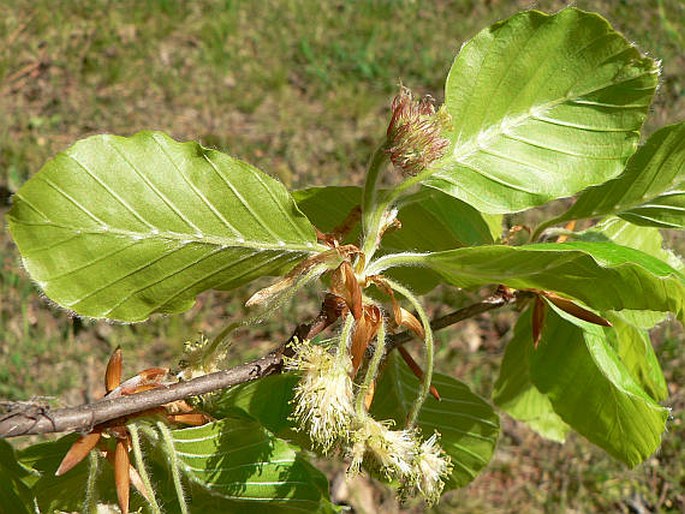
Ecology: The European Beech is an oceanic and sub-oceanic climate woody species with need of 800–1000 mm precipitation. It is the third most shade-tolerant woody species in Czechia (after yew and fir). This tree creates multi-storeyed forest, mostly unmixt, with its shading pushes most of other woody species away. European Beech prefers soil, which is freshly wet, well aerated, often calcific and rich in humus and minerals. It dislikes waterlogged but also dry and sandy soils. It is sensitive to drought and late frost too. It is diagnostic species for Fagion alliance. It flowers in April and May, seeds ripen in the autumn.
In Czechia are beech forests structured into Herb-rich, Calcicolous, Acidophilous and Montane sycamore-beech forest. In the middle Europe is European Beech accompanying by Abies alba, Pinus sylvestris, Taxus baccata, Quercus petraea, Fraxinus excelsior, Carpinus betulus, Tilia spp., Acer pseudoplatanus, Ulmus glabra, Sorbus torminalis, Cerasus avium, etc., in the southern and southeastern Europe also with Pinus nigra, Pinus heldreichii, Celtis orientalis, Picea omorika, Quercus cerris, Tilia tomentosa, Corylus colurna, Juglans regia, etc.
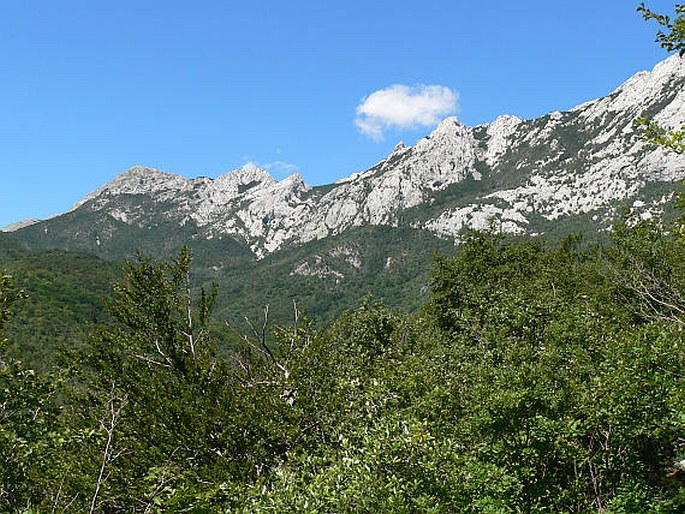
The species started to expand in Europe from Balkan refugium in middle of Danubia. In Czechia has been already occurred sporadically in lower locations during the Atlantic times. Expansion of this tree is continuing from 2500 years B.C., in the middle of epiatlantic period a huge immigration of vegetation belt Beech-Fir / Fagus-Abies happened (Beech immigrated earlier then Fir in Czechia). Vegetation belt Beech-Fir / Fagus-Abies intruded into Czechia from southwest as a cotter between the vegetation of Spruce / Picea belt in mountains and Oak-Lime-Maple / Quercus-Tilia-Acer belt in lower locations in condition of lowering upper forest boundary. Greatest development of the European Beech has begun from epiatlantic to subatlantic period, when its area has formed into the final shape and its substitution in forests is the largest. In the end of younger subatlantic there is a change of it, because of the interference in Beech forests by human activities. Most expressive lowering its substitution is roughly in the last 200 years, when the indigenous beech forest has been replacing by spruce, pine or larch.
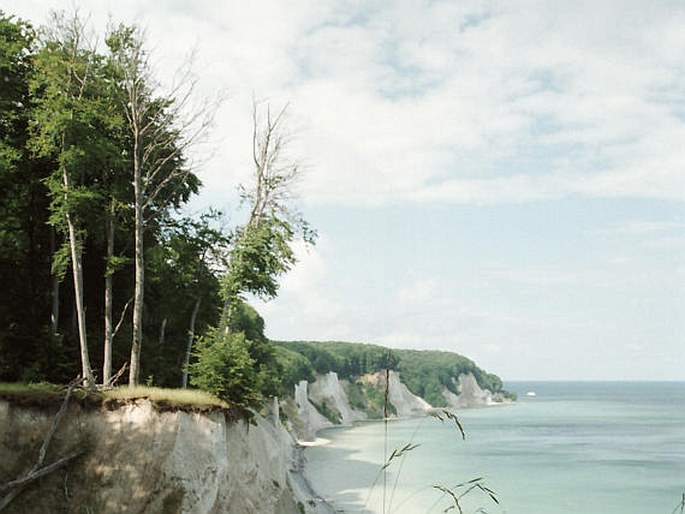
Description: Deciduous tree, 40–50 m tall, with thin, cylindrical trunk and conical, later wide-branched treetop. Root system is heart-shaped with strong many-sides roots. Bark is smooth, grey to white-grey, rarely fissured. Annual shoots are red-brown, primarily white-hairs, later glabrous. The buds are alternately double-rowed, thin fusiform, 10–25 mm long, cinnamon brown, scales are whity on the top. Leaves are smooth, shining above, lighter beneath, have short petiole, lamina is elliptic to oval-elliptic, 3–12 cm long, entire to shallow crenate, undulate at the edges, ciliate, primary vein is whity hairy, in the axils of the marginal veins are long-haired. Secondary veins are in 5–9 pairs. Petiole is 5–10 mm long, pinnate. Stipules are narrowly lanceolar, light brown, smooth, soon deciduous. Male flowers are in the axils of the leaves on long pedunculated bundle, Female flower are 2–3 in reddish cup with hairy nodulation. The seeds are about 1 cm long, brown, smooth, triangular, at the edges with winged achenes – beechnuts. The beechnuts are closed by 2–3 pcs in brown, ligneous, echinate, pedunculated cup which is about 2 cm long and dehiscent by four lappets. Autumn coloration of leaves comes from yellow, over the reddish until dark brown. European beech has lifespan of 200 to 400 years.
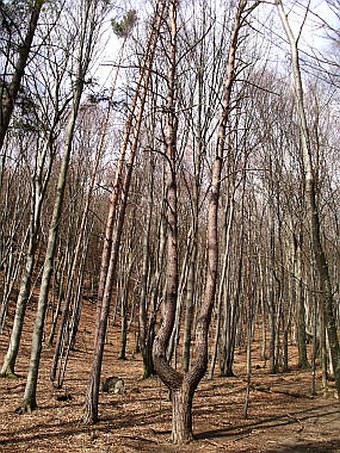
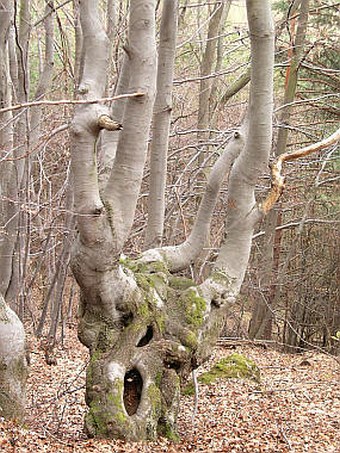
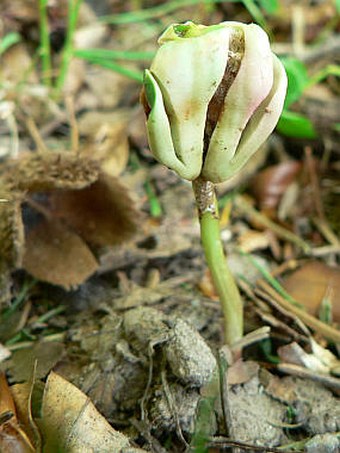
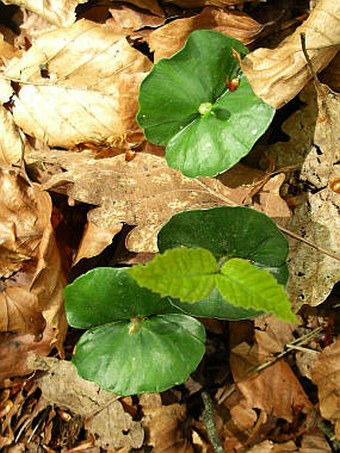
Use: European beech is one of the most important economic leafy woody species in Europe. It has interspersed porous wood, skin-pink to pink-brown colour, without marked true heartwood. Is hard, heavy, little flexible. False heartwood with red-brown colour that occurs by old trees lowers the quality of wood. Beachwood is useless in outdoor conditions. It is using mainly in production of bent-wood furniture (beechwood contains a huge amount of lignin, which softens at high temperatures, so than is wood very shapable), for veneer, plywood, parquet. In the Middle Ages was using in production of wood coal.
Raw beechnuts are slightly toxic for some people. You can lower the toxicity by thermal treatment (for example roasting). Adverse effects shows as qualmishness, diarrhea, vomiting. (Personal experience of author: if you wouldn´t eat a kilo of beechnuts, you’ll be all right. I personally eat a lot of them.)
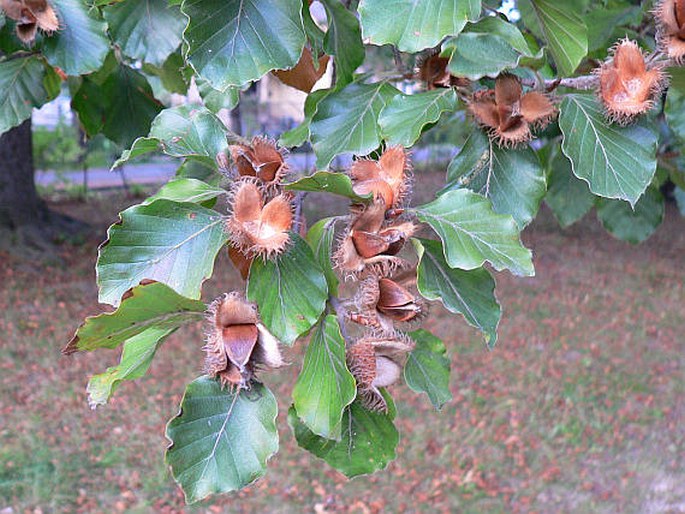
Wide use has European Beech with plenty of cultivars, which are different by its habitat, shape or colour of leaves in gardens. It is often setting out as solitaire wood species in larger gardens and parks; it is also usable in hedge.
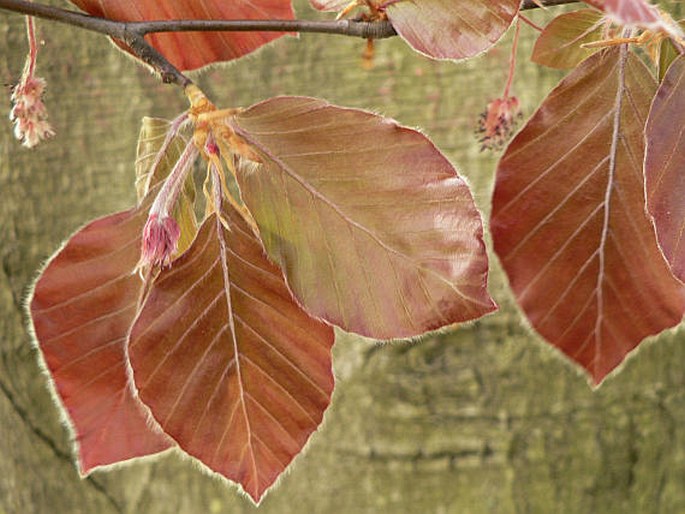
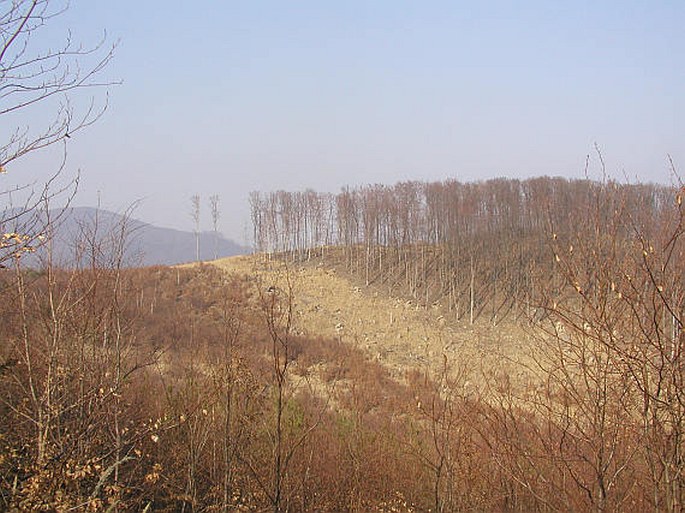
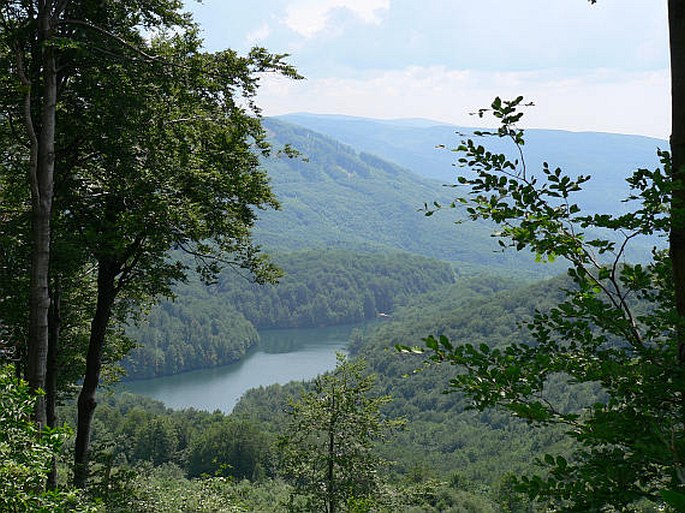
Photos: 5. 7. 2005 (Slovakia, Vihorlat), 9. 4. 2007 (Súľov), 25. 3. 2005 (Slanské vrchy), 21. 4. 2007 (Czechia, Český Ráj), 2004 (Germany, Rügen), 9. 8. 2005 (Croatia, Paklenica), 26. 4. 2007 (Czechia, Liberec).
Translation: Lucie Hodačová


